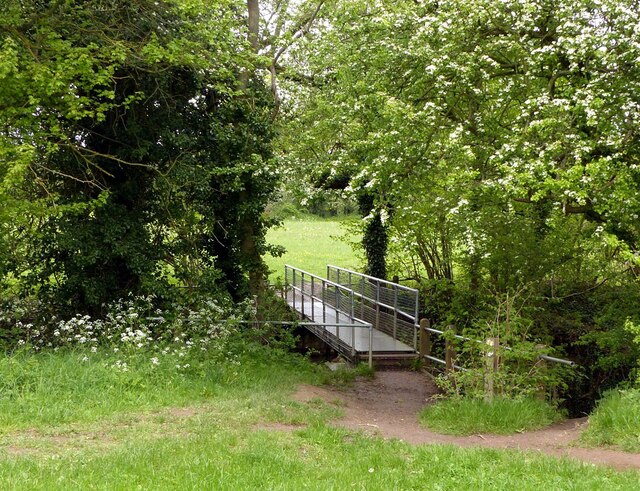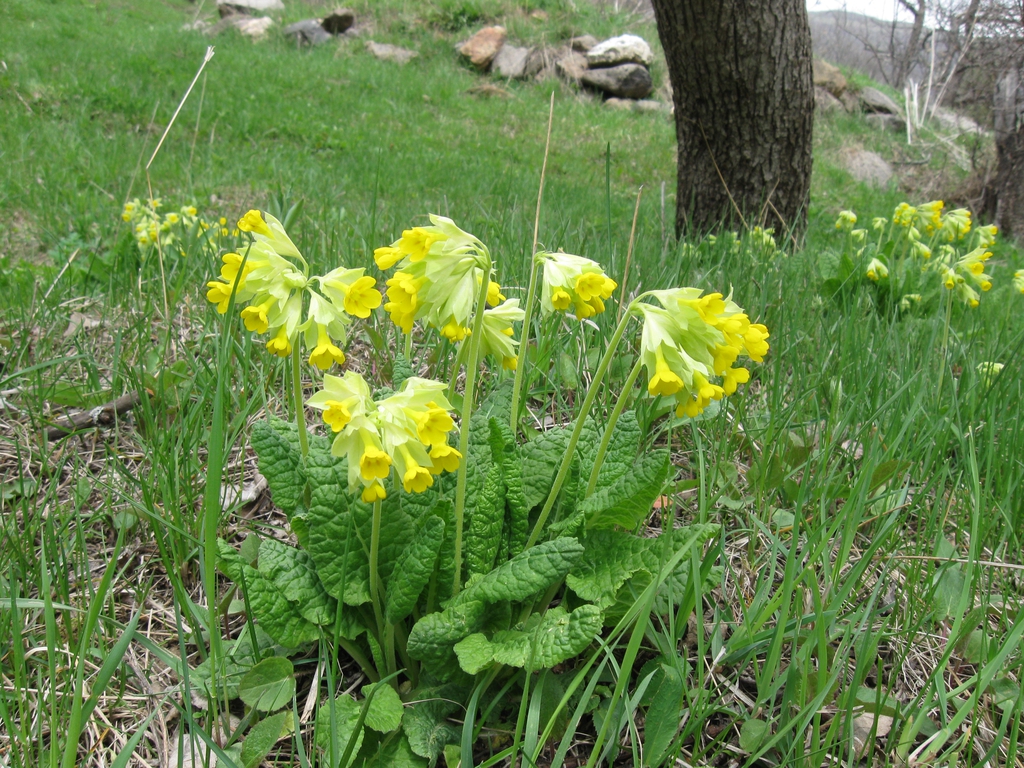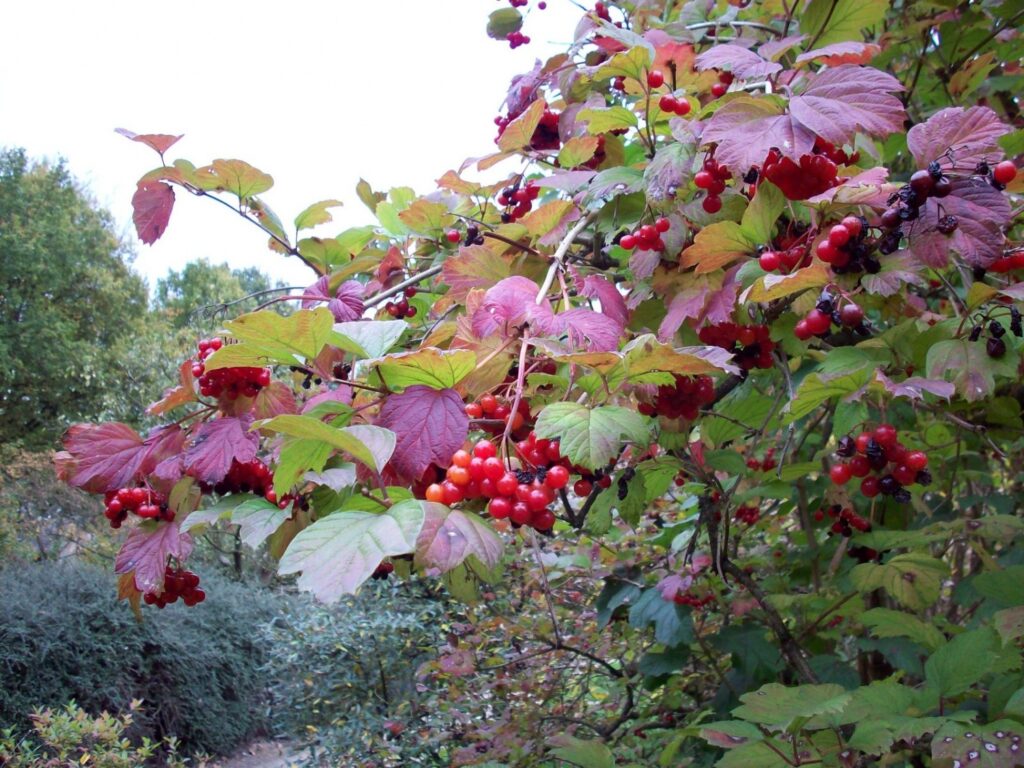Uncategorized
Viburnum opulus
Whilst wandering around the garden looking for flowers to decorate the house last Christmas Criss and I were taken or should I say taken aback by the beauty of berries festooning Viburnum opulus ‘Notcutt’s Variety’. Masses of ivory white berries, reminding me of the mistletoe of English Christmases of my childhood, dangled on thin stems attached to strong upright branches. Criss and I picked a large bunch of stems, about 70 centimetres long, and put them into a vase. Four weeks later the berries in the vase had turned deep pink but still looked respectable. Meanwhile, outside, by February the berries left on the shrub had turned to clusters of bright, glossy red beads. The fruits are edible although I haven’t tried them. Our resident birds make short work of them though, and by early April all that is left are slightly bedraggled clumps of brownish-red skins. In a good year the foliage of ‘Notcutt’s Variety’ turns maroon red during late autumn or early winter.
Viburnum opulus is a native of much of Europe and is often called the Guelder Rose because the most popular variety, ‘Roseum’, is said to have originated in Gelderland, a province in the Netherlands. ‘Roseum’ is the snowball tree found in many old and not so old gardens in Australia where it is more often than not sold as Viburnum opulus ‘Sterile’. The round heads of sterile flowers, seven to nine centimetres in diameter, are apple green at the start, then turn white and age to pale pink. The flowers make a good show for quite a while during spring and early summer.
The wild form, called a water elder in England, carries white lace cap flower heads, 5-10cm across, with showy sterile flowers surrounding inner fertile flowers.

In my home village of Lambley in the East Midlands of England, the headwaters of a stream called Cocker Beck runs through a deep dell, dripping with small springs which drain the surrounding hills. A short walk from the village there is a footbridge overlooking the beck whereon its steep banks a water elder grows – or did so seventy years ago when I was a lad. The footbridge leads to a meadow which is now managed by the Woodland Trust. This meadow would look the same as it did fifteen hundred years ago during Saxon times. It is still full of cowslips, Primulas veris, in early spring. During June, before the meadow is mowed, sweet grasses, pignuts, lady’s smock, harebells and many other flowers can be found. I remember a dreamy day seventy years ago, lazily lying in the meadow, gazing at a sublime blue sky decorated by a few white puffy clouds, being entertained by a chorus of bumble bees and serenaded by a lone skylark.

Cowslips – Primula veris

Lambley Dumbles
